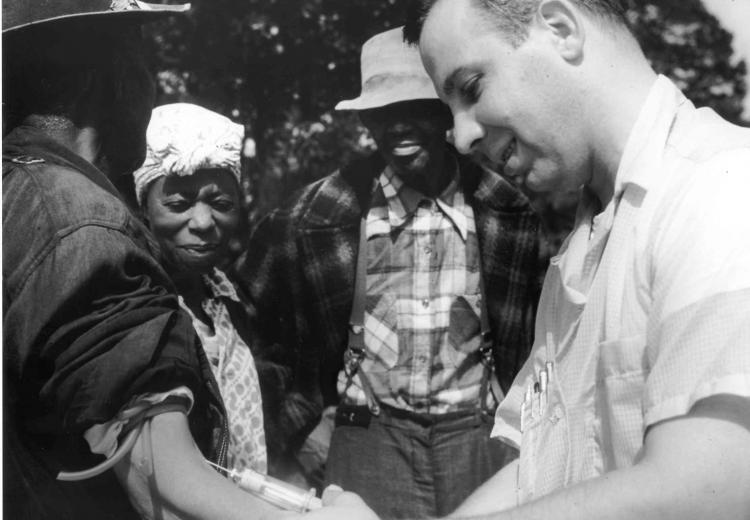Media Resource
BackStory: Another Burden to Bear

Photo caption
A doctor drawing blood from a patient that is part of the Tuskegee Syphilis Study
This episode of the NEH-funded BackStory—“Another Burden to Bear”—discusses the history of racial health disparities in the U.S. The episode features discussions about the Tuskegee Syphilis Study, racism within mental health care, efforts to combat tuberculosis in Native American communities during the 1920s, and the political activism of the Madrigal Ten.
A full transcript of this episode can be found on the BackStory website.
Audio file
Bad Blood (1:08-03:14)
Mental Health, Malpractice, and Marginalization (5:19- 25:20)
Fighting Invisible Enemies (26:18- 37:50)
The Madrigal Ten (38:07-54:50)
EDSITEment Resources
Related on EDSITEment
Lesson Plan
The Path of the Black Death
Closer Reading
Science, Shakespeare, and the STEM Humanities
Lesson Plan
